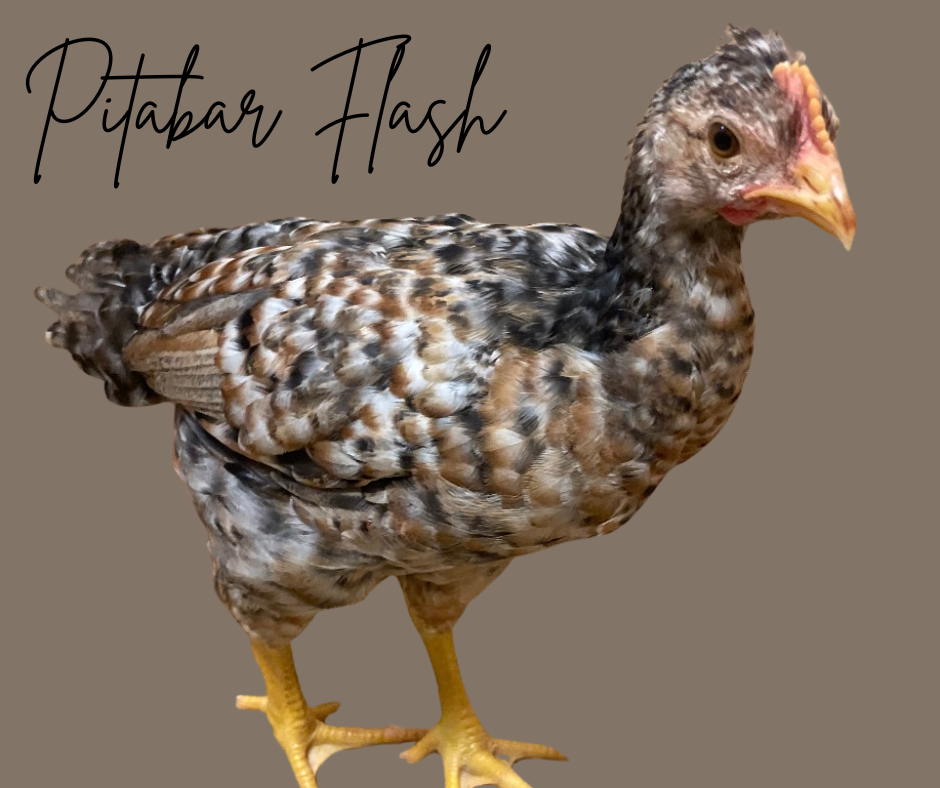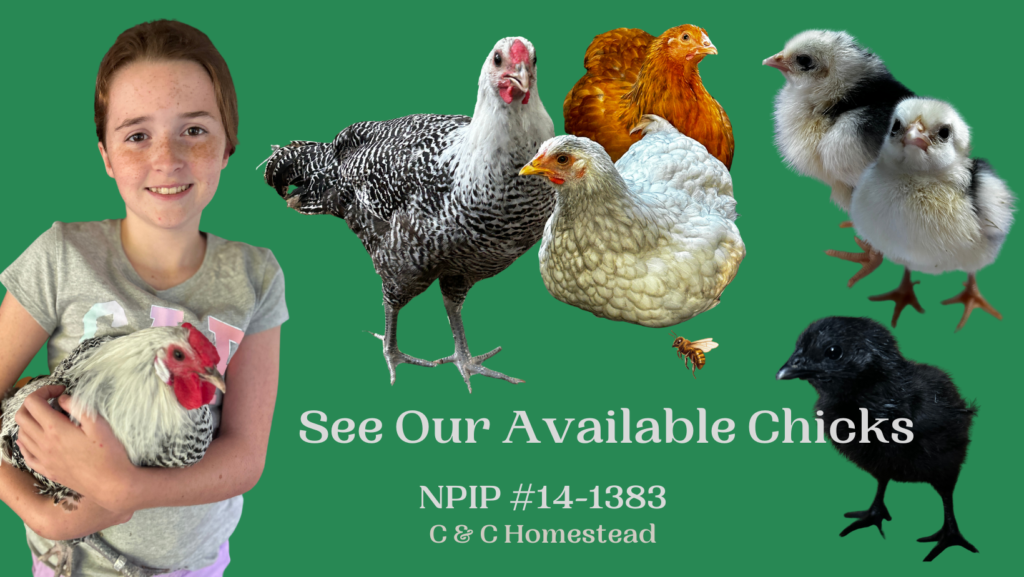Balancing Corporate & Homesteading Lifestyles
Pitabar Flash: Crossing a Pita Pinta Rooster with an Opal Legbar Hen – Color and Genetics

When crossbreeding chickens, understanding the genetics involved can help predict the appearance and traits of the offspring. Here’s a detailed analysis of what you can expect when crossing a Pita Pinta rooster with an Opal Legbar hen, focusing on color variations, genetic interactions, and auto-sexing capabilities.
Pita Pinta Rooster
Origin and Traits:
- Origin: Spain
- Color: The Pita Pinta typically exhibits mottled black and white plumage, although there are other varieties such as full white, red spotted, and black without spots.
- Genetics: The mottling in Pita Pintas is influenced by the dominant white (I) gene combined with the gene for black (E or E^B allele), resulting in the speckled appearance.
Opal Legbar Hen
Origin and Traits:
- Origin: A variant of the Cream Legbar, developed to have a lavender or opal plumage.
- Color: Opal Legbars have a grayish-blue, sometimes lavender plumage. They carry the auto-sexing gene, which allows chicks to be sexed by color at hatch.
- Genetics: The lavender (lav) gene is recessive and dilutes the black pigment to create the lavender color. The auto-sexing trait is linked to the barred gene (B), which is sex-linked.
Expected Offspring: Color and Genetics
Combining Genes: Crossing a Pita Pinta rooster with an Opal Legbar hen introduces a mix of dominant and recessive genes, resulting in diverse and varied offspring.
- Plumage Color:
- Mottling vs. Lavender: Since the mottling gene (I) is dominant, it will likely be expressed in the first generation (F1) offspring, potentially resulting in mottled plumage. However, the exact appearance will depend on how these genes interact with the lavender gene from the Opal Legbar.
- Blue/Lavender Dilution: The lavender gene from the Opal Legbar is recessive, meaning it must be homozygous to express fully. F1 offspring may carry this gene without showing the lavender color unless they are bred with another lavender carrier.
- Potential Color Outcomes:
- Mottled Blue/Gray: Offspring may exhibit a mottled blue/gray appearance if the mottling gene combines with the blue dilution.
- Black with Mottling: Dominant black combined with the mottling gene could result in black chicks with white spots.
- Intermediate Colors: The variety of dominant and recessive gene interactions could produce a range of colors, including shades of gray, black, and white.
Auto-Sexing Traits:
- Barred Gene: The Opal Legbar carries the sex-linked barred gene (B). Male chicks will inherit the barred gene from the mother and a non-barred gene from the father, leading to a barred plumage pattern. Female chicks will inherit a single barred gene, which may not express fully if mottling is dominant.
- Sex Identification: While auto-sexing might be less distinct due to the mottling gene, there may still be some differentiation in plumage patterns between males and females at hatch, aiding in sex identification.
Breeding Considerations
- F1 Generation:
- Genetic Diversity: The F1 generation will exhibit significant genetic diversity, with varied colors and patterns due to the mix of dominant and recessive genes.
- Phenotypic Variety: Expect a range of phenotypes, with some chicks showing mottling, some showing intermediate colors, and potential partial expression of the lavender gene.
- Selective Breeding:
- Desired Traits: Selective breeding can help enhance specific traits such as lavender plumage or pronounced mottling. Pairing F1 offspring carrying the lavender gene with other lavender carriers can achieve desired color traits in subsequent generations.
- Auto-Sexing Enhancement: Maintaining or enhancing the auto-sexing trait requires focusing on retaining the barred gene within the lineage.
- Genetic Health:
- Diversity: Crossbreeding increases genetic diversity, which can improve overall flock health and vigor.
- Monitoring: Regularly monitor the health and development of the offspring to ensure no undesirable traits are propagated.
Conclusion
Crossing a Pita Pinta rooster with an Opal Legbar hen results in a diverse and vibrant flock, with a range of colors and patterns due to the interaction of dominant and recessive genes. While the mottling and lavender genes produce varied outcomes, careful selective breeding can enhance desired traits over generations. This crossbreed offers an exciting opportunity to explore genetic possibilities and enjoy a unique and colorful flock.
Identifying Sex-Linking Traits in Pita Pinta and Opal Legbar Hybrids
Crossing a Pita Pinta rooster with an Opal Legbar hen can result in offspring with diverse genetic traits, including some sex-linking characteristics that can be useful for determining the sex of the chicks at hatch. Understanding these traits can help you manage your flock more effectively.
Genetic Background
Pita Pinta Rooster:
- Plumage: Typically mottled black and white, though other color varieties exist.
- Genetics: Dominant mottling gene (I) combined with the gene for black (E or E^B allele).
Opal Legbar Hen:
- Plumage: Grayish-blue or lavender due to the recessive lavender (lav) gene.
- Auto-Sexing Trait: Linked to the barred gene (B), which is sex-linked and allows for sex determination based on plumage color at hatch.
Key Sex-Linking Traits
- Barred Gene Expression:
- Males (Cockerels): Inherit one barred gene (B) from the Opal Legbar mother and a non-barred gene from the Pita Pinta father, resulting in a barred or partially barred plumage pattern.
- Females (Pullets): Inherit one barred gene from the Opal Legbar mother but no barred gene from the Pita Pinta father, leading to a less distinct barred pattern or no barring at all.
- Color Patterns:
- Males: May exhibit more pronounced barring combined with the mottling from the Pita Pinta genetics. The interaction between the barred and mottling genes can result in a distinctive pattern that is more visible in males.
- Females: Tend to have a more uniform color without distinct barring, often appearing more mottled or with a solid color due to the absence of a second barred gene.
- Feather Growth Rates:
- Males: Often have slower feather growth compared to females. This trait can be used in combination with plumage patterns to help identify sex.
- Females: Typically exhibit faster feather growth, which can be observed within the first week after hatching.
Visual Identification at Hatch
Day-Old Chicks:
- Males: Look for chicks with more pronounced barring on the down feathers. The presence of bars or stripes across the back and head is a strong indicator of a male chick.
- Females: Chicks with more uniform coloration and less distinct barring are likely female. They may also show a solid or mottled color without clear stripes.
Additional Tips for Sex Identification
- Comb and Wattle Development:
- Males: Generally develop larger combs and wattles earlier than females. This difference becomes more noticeable as the chicks grow.
- Females: Smaller combs and wattles in the early stages.
- Behavioral Traits:
- Males: Often more assertive and curious, showing more interest in their surroundings.
- Females: Typically more reserved and less aggressive in their behavior.
Conclusion
Identifying sex-linking traits in Pita Pinta and Opal Legbar hybrids involves observing the barred gene expression, color patterns, and feather growth rates. By paying close attention to these characteristics, you can determine the sex of your chicks with greater accuracy. This knowledge helps in managing your flock and ensuring a balanced mix of hens and roosters.



